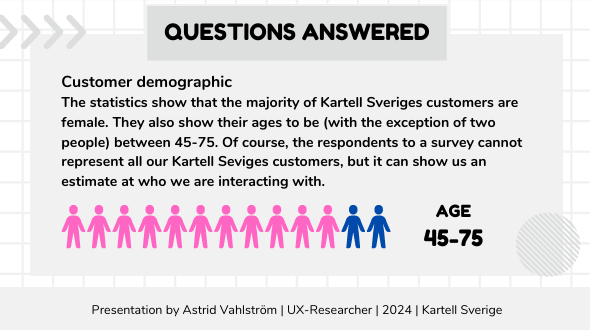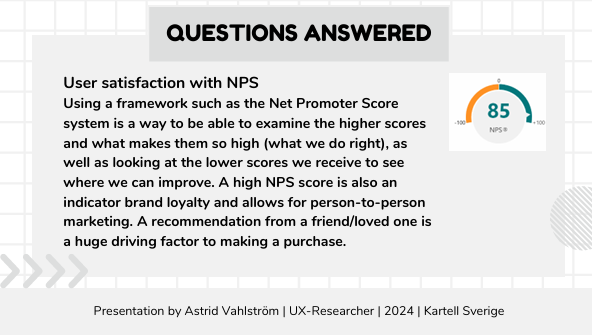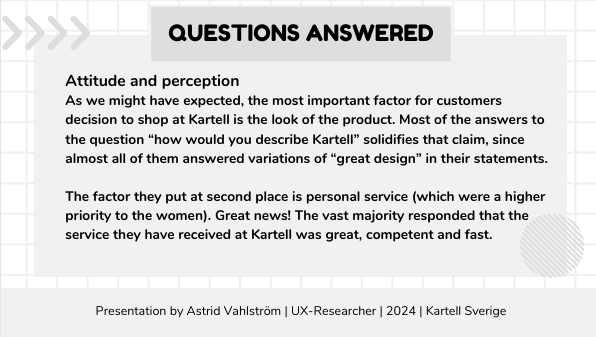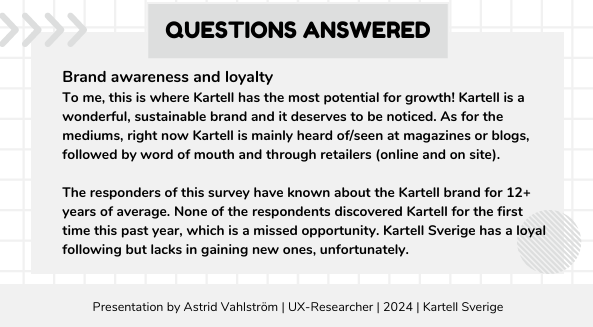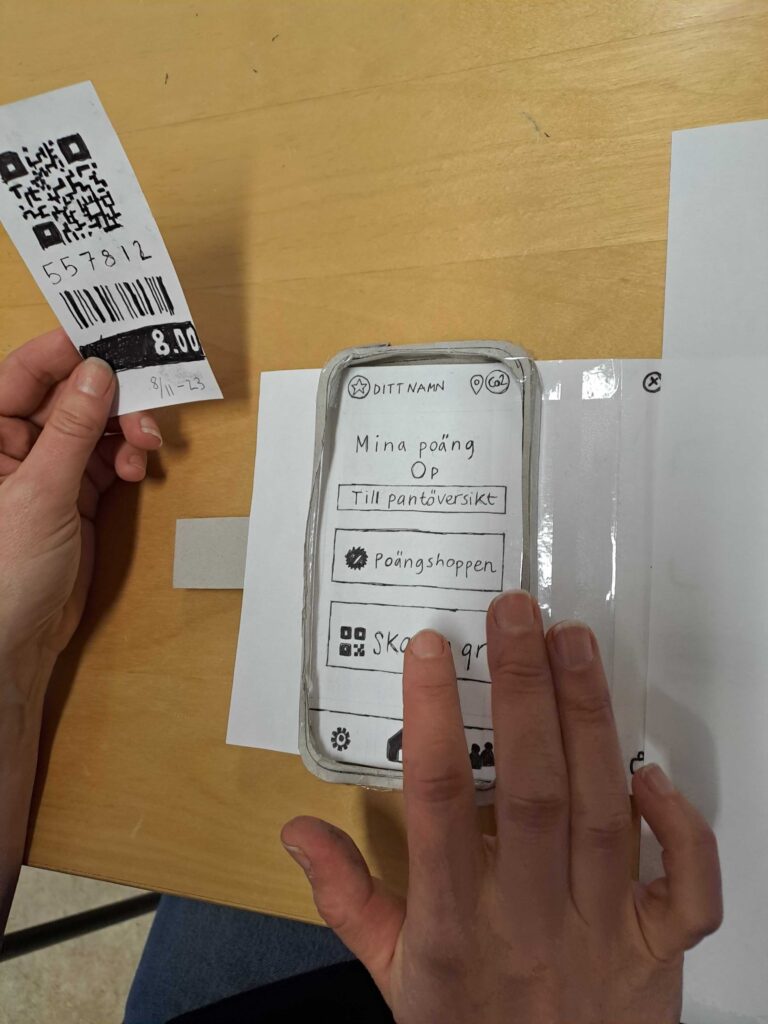Kartell Sweden, piece by piece
During my first internship as a UX designer, I had the opportunity to work with Kartell, an Italian design giant in interior design and furniture. With its flagship store in Östermalm, Kartell has established itself as a significant player in the Swedish interior design scene, known for iconic products like the Componibili side table and the transparent Louis Ghost chair. To strengthen its brand in Sweden, Kartell needed a deeper understanding of Swedes' relationship with premium interior design, and I was hired as a UX researcher to lead this investigation.
The assignment was extensive and allowed me to apply my skills in a real environment, where I used the Design Thinking model to explore and define problem areas. After discussions with my colleagues at Kartell, we formulated a core question: How do Swedes perceive the Kartell brand and its products, and how can we increase brand awareness?

With this question and the Design Thinking model as our foundation, I began.
Market Analysis
My research started by mapping out Kartell's current users. Through extensive research, I identified four main groups: individuals, retailers, architects, and interior designers. To gain a deeper understanding of the market, I also analyzed Kartell’s competitors, their strategies, and public perception. This market analysis provided valuable insights into the niche design furnishings market, a new area for me.
P.E.S.T Analysis
To understand the factors influencing Swedes' view of Kartell, I used the PEST tool. I also delved into Swedes' relationship with interior design by analyzing reports from TMF (Swedish Wood and Furniture Industry Association), which offered valuable insights into how this relationship differs from the Italian market.

The Swedish Furniture Industry
I conducted an in-depth study of the Swedish furniture industry to understand its scope and how it compares to imports. Here, I gathered a wealth of data and insights, some of which are presented below.
Survey
To gather opinions and facts, I conducted a survey among Kartell's existing customers. Respondents were recruited from Kartell's mailing list and were offered a discount code as a thank-you for participating. The survey aimed to investigate customer demographics, satisfaction (including NPS), attitudes, perceptions, brand awareness, and identify customer pain points.
Designing the survey was an exciting challenge, and I brainstormed ideas and formats with my supervisor and other UX experts. Together, we arrived at a set of 13 questions with varied response formats tailored to different topic areas.

The survey received responses! Not a massive number, but enough to spot patterns and gain insights! This took us to the next phase in the Double Diamond model: Define!
Define
The survey and market analysis provided valuable insights. As part of the define phase, I analyzed the responses, both quantitatively and qualitatively, and presented the results in a summary report. Some excerpts of this report are shown here.
This led me to create a SWOT analysis for Kartell, identifying the brand's strengths, weaknesses, opportunities, and threats.

A recurring insight from both the survey and the SWOT analysis was the importance of social media for the brand's image. I developed a Brand Strategy for social media and created a Marketing Funnel to visualize a customer journey from first contact to loyal customer.
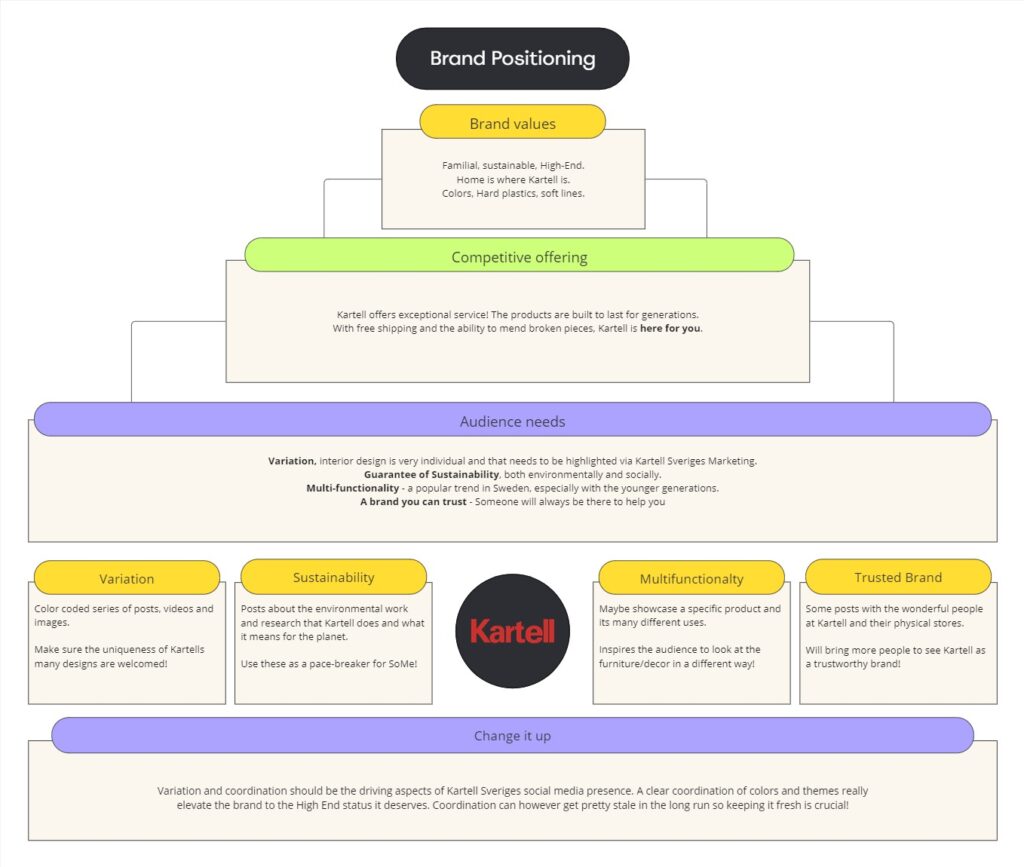
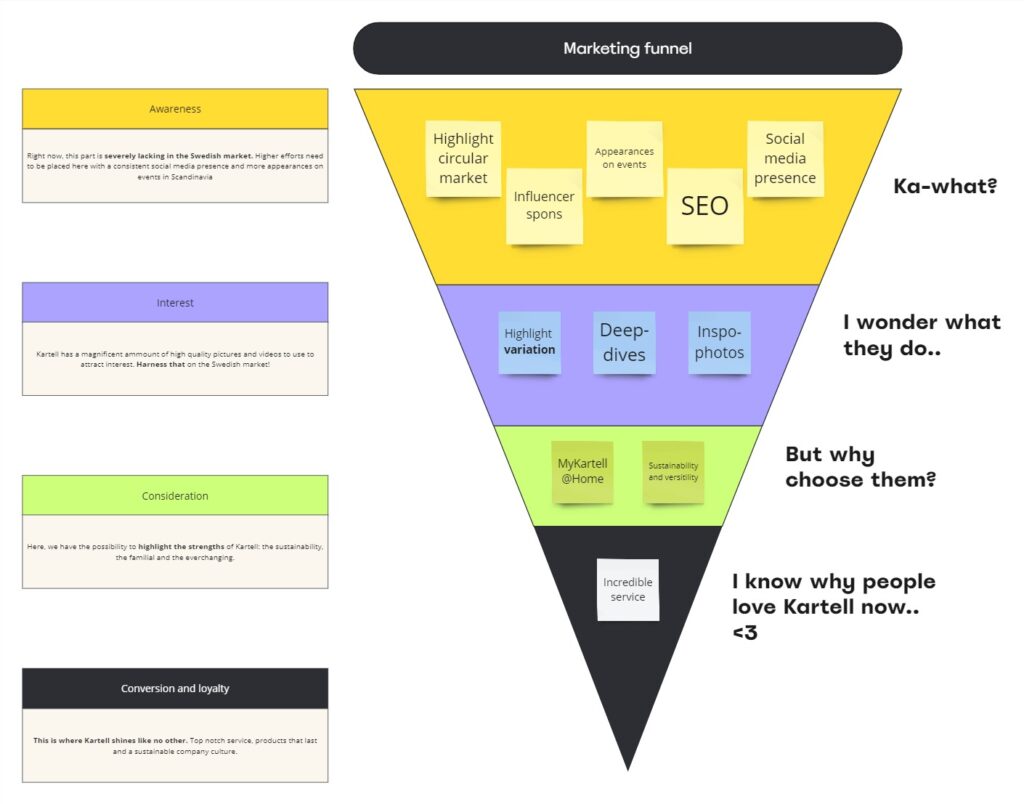
Projektet med Kartell gav mig ovärderliga erfarenheter och insikter, både inom UX-research och hur man skapar värde för ett etablerat varumärke på en ny marknad.
Key Takeaways:
- The importance of market analysis: To understand the market and the competition is essential for effective brand positioning.
- Customer insight through data collection: A well-executed survey can provide in-depth insights into customers' needs, attitudes, and perceptions.
- Adapting brand strategy: Analyzing market-specific factors, such as cultural differences in design preferences, can help create a more targeted brand strategy.
- The weight of social media: Integrating social media into the brand strategy is crucial for building and maintaining customer relationships in today's digital landscape.
- Using Design Thinking: Applying the Design Thinking model in each step of the process helps maintain a focus on user needs and issues.
- Effective data analysis: Combining both qualitative and quantitative data provides a more comprehensive view of customers' experiences and needs.
This project with Kartell gave me invaluable experience and insights, both in UX research and in creating value for an established brand in a new market. These lessons have strengthened my ability to conduct extensive UX research projects and deliver insights that can be translated into strategic decisions. I look forward to applying these skills in future projects.






